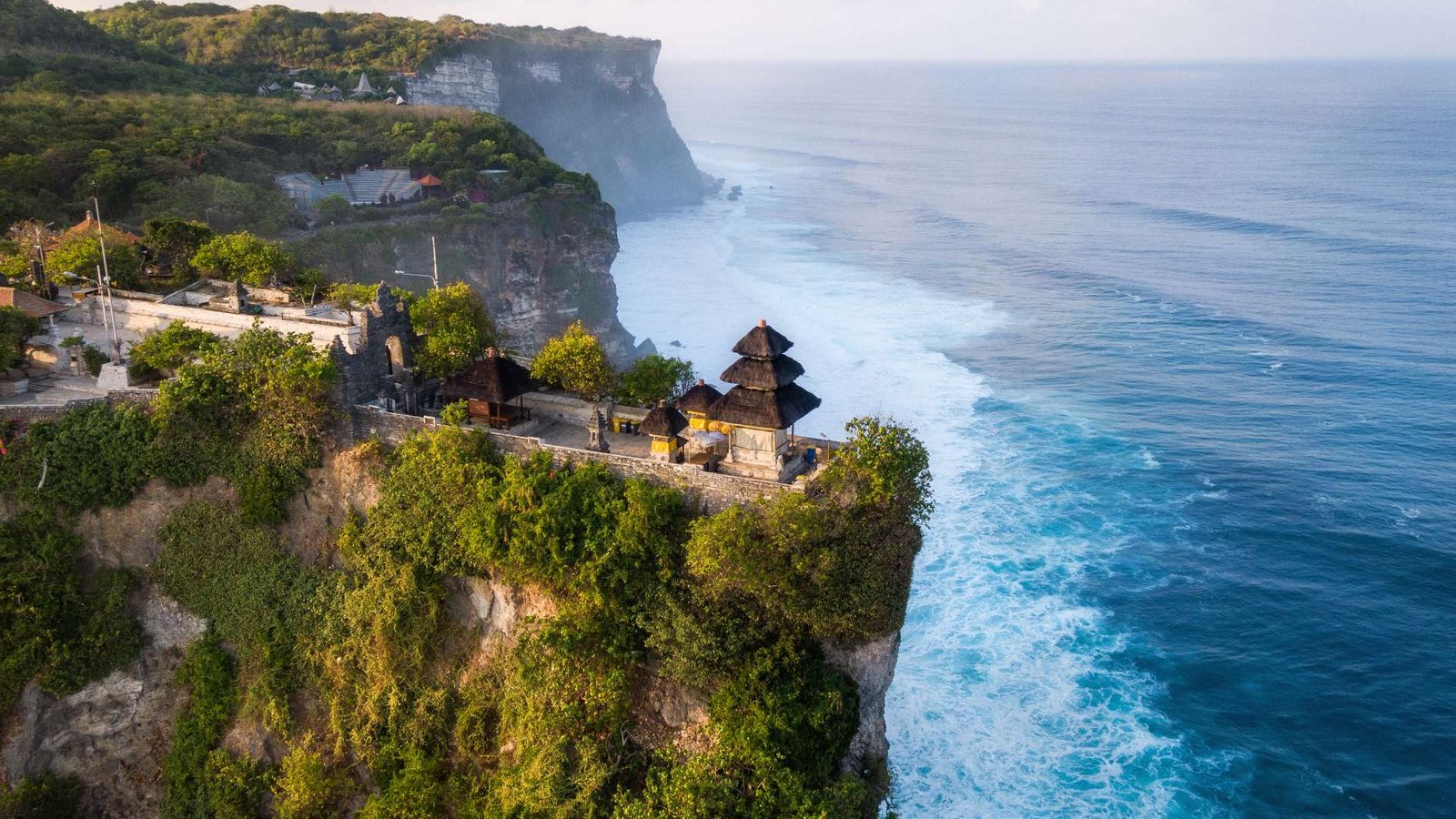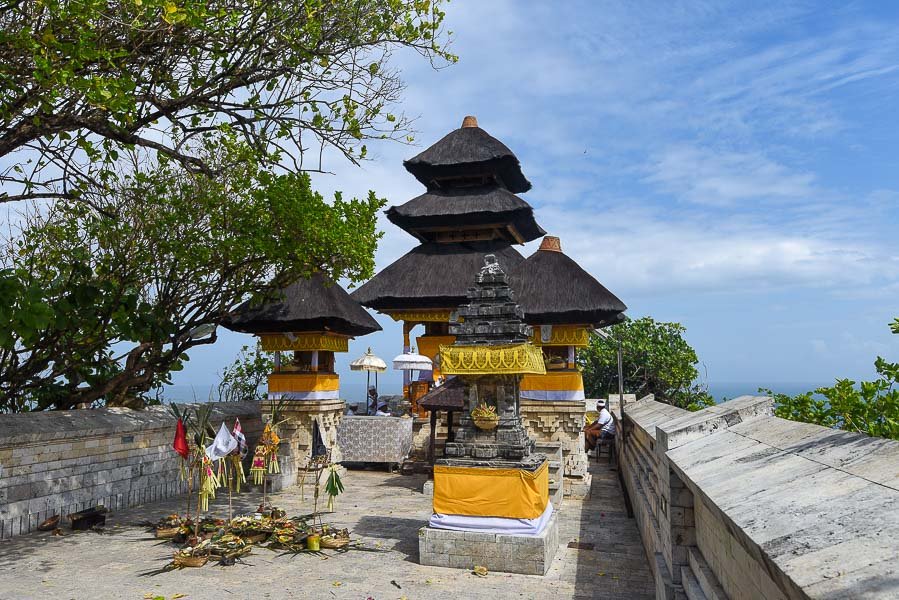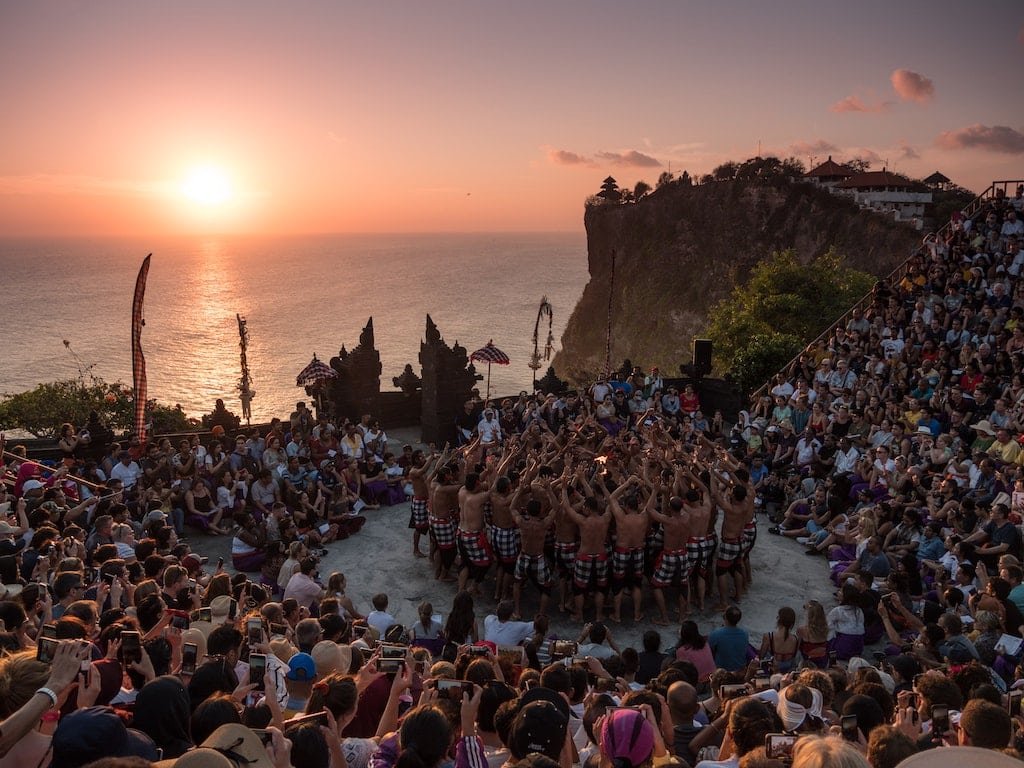Nestled on the southern cliffs of Bali, Uluwatu is an enchanting coastal area that captivates visitors with its breathtaking beauty and cultural significance. At the heart of this destination lies the ancient Uluwatu Temple, perched dramatically atop soaring cliffs that overlook the vast expanse of the Indian Ocean. The temple exudes an aura of spirituality and tranquility, offering a serene escape for those seeking a deeper connection with Balinese traditions and beliefs.
The Uluwatu Temple, also known as Pura Luhur Uluwatu, is one of the six holiest temples in Bali, believed to provide spiritual protection to the island. As the sun sets over the horizon, Uluwatu becomes a celestial setting for the Kecak dance, a captivating traditional performance that narrates the Ramayana epic. Against the backdrop of the fiery sunsets, the rhythmic chants and mesmerizing dance movements create a surreal and unforgettable experience.
The architectural design of Uluwatu Temple showcases traditional Balinese features, with beautifully carved stone walls and sculptures depicting mythological characters from Hindu epics. The temple’s location on the edge of the cliff imparts a sense of awe and reverence, emphasizing the harmonious relationship between nature and spirituality.
Kecak Dance is Also known as the Bali fire dance or the Ramayana monkey chant, the Bali Kecak dance show story is a drama based on the Sanskrit epic, the Ramayana. Although Kecak rituals have been around for a long time, the shows on display in modern-day Bali date from the 1930s. It is a dramatization developed by the German artist Walter Spies and the Balinese dancer Wayan Limbak.Dancers perform the drama by moving and chanting rhythmically. They start slowly and then gradually raise the tempo while falling into a ritualistic trance-like state. The mood rises and falls as storytellers, known as dalang, narrate the tale. There is no use of musical instruments in the performance – the rhythm comes from the various sounds and chants of the human voice. It is a unique and unforgettable experience you will recall whenever you think of Bali.
Uluwatu offers a blend of natural splendor and cultural heritage, making it a must-visit destination for travelers seeking a spiritual and scenic experience. Immerse yourself in the allure of the clifftop temple, bask in the glorious sunsets, and relish the charm of Uluwatu’s sandy beaches. The harmonious combination of nature and spirituality will leave you with memories to treasure for a lifetime.

History of Uluwatu Temple: A Spiritual Icon
Uluwatu Temple, also known as Pura Luhur Uluwatu, is one of Bali’s six most important temples, collectively known as Sad Kahyangan. The temple’s origin dates back to the 11th century during the reign of the Balinese ruler, King Marakata, of the Warmadewa Dynasty. It is believed that Mpu Kuturan, a revered Hindu sage and architect, played a crucial role in constructing this sacred temple.
Situated atop a steep cliff towering approximately 70 meters above the Indian Ocean, Uluwatu Temple was strategically chosen for its spiritual significance and breathtaking panoramic views. The temple is dedicated to the protective spirits of the sea, revered as Dewa Baruna, to safeguard Bali from evil spirits and negative influences. As such, Uluwatu Temple serves as a place of spiritual sanctity and blessings for the island’s inhabitants.


History of Kecak Dance: A Cultural Treasure
The Kecak dance is a traditional Balinese performance with roots dating back to the 1930s. Created by a Balinese artist named Wayan Limbak in collaboration with German painter Walter Spies, the dance was originally intended as a dance-drama to retell the Ramayana epic. Over time, the Kecak dance evolved into a captivating and dramatic art form that has become an integral part of Balinese culture and tourism.
One of the most distinctive features of the Kecak dance is the rhythmic chant of “cak, cak, cak” by a group of male performers, often depicting the chorus of monkeys from the Ramayana story. The dancers sit in a circle, swaying and moving in sync to the beat of the chants, while the main characters of the epic enact their roles in the center.

The Kecak dance is a powerful portrayal of good triumphing over evil, with visually captivating performances that include fire dances and stunning choreography. This enthralling dance is typically performed at sunset, adding to the enchantment as the golden rays illuminate the cliffs of Uluwatu Temple, creating a surreal and magical ambiance for both locals and visitors alike.
Uluwatu Temple and the Kecak dance are not only cultural treasures but also an integral part of Bali’s identity, attracting thousands of visitors who seek to experience the island’s rich spiritual heritage and captivating artistic traditions.
The entrance fee to Uluwatu Temple is around IDR 50,000 per person for adults and IDR 30,000 for children.
During Kecak dance performances, an additional fee of IDR 100,000 to IDR 150,000 is usually required.
Many picturesque spots within the temple complex are ideal for capturing photos, so consider hiring a photographer or taking advantage of photo packages.
Food vendors offer snacks and refreshments, with prices starting from IDR 20,000.
Traditional dance performances and fire dances can be enjoyed at an additional cost.

Copyright © 2023 Developed by Baliwebagency.com